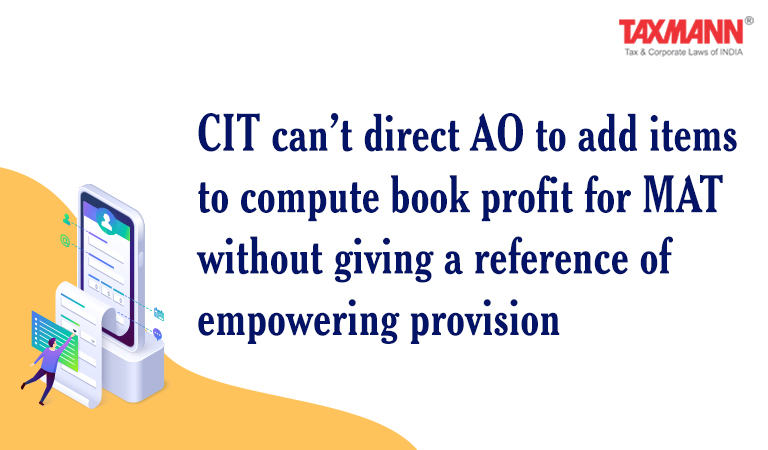CIT can’t direct AO to add items to compute book profit for MAT without giving a reference of empowering provision
- Blog|News|Income Tax|
- 2 Min Read
- By Taxmann
- |
- Last Updated on 19 November, 2021

Case Details: CIT v. Nuclear Power Corporation of India Ltd. - [2021] 132 taxmann.com 100 (Bombay)
Judiciary and Counsel Details
-
- K.R. Shriram and R.I. Chagla, JJ.
- Suresh Kumar for the Appellant.
- K. Gopal, Jitendra Singh and Ms. Simran Hasija for the Respondent.
Facts of the Case
The assessee was a Government of India enterprise. It filed its return of income declaring total income as Nil under normal provisions and as per provisions of section 115JB.
The return of income was processed under section 143(1), and notice under section 143(3) was issued. Assessing Officer (AO) passed assessment order wherein some additions were made under normal provisions of Act. However, AO didn’t add such additions while computing book profit under section 115JB.
Commissioner of Income-tax (CIT) exercised power under section 263 and set-aside order of AO. He further directed AO to add his additions, made during the original assessee, to arrive at the book profit computed under section 115JB.
Aggrieved by order of CIT, the assessee filed the appeal before the Tribunal. The Tribunal held that the disputed additions were not part of the list appearing in section 115JB. Therefore there was no justification for CIT to use his revisionary powers in the case under consideration. Aggrieved-Revenue filed the instant appeal before the Bombay High Court.
High Court Held
The Bombay High Court held it didn’t find any perversity in the order passed by the ITAT. The assessee had furnished all the documents called for by the AO during the assessment proceedings. AO had applied his mind while computing the income under the normal provisions as well as under section 115JB.
If the CIT felt that the Assessment Order passed by the AO was erroneous, he ought to have identified under which category from A to K in the Explanation below sub-section (2) of section 115JB the four items of additions made by AO would fall. This was mainly because the AO believed that these four items of additions would not fall under the items mentioned in the Explanation.
The ITAT had also observed that the disputed four items were not part of the list appearing in section 115JB. Without identifying under which part of the list disputed four items form part of CIT could not have exercised its revisionary powers.
Disclaimer: The content/information published on the website is only for general information of the user and shall not be construed as legal advice. While the Taxmann has exercised reasonable efforts to ensure the veracity of information/content published, Taxmann shall be under no liability in any manner whatsoever for incorrect information, if any.

Taxmann Publications has a dedicated in-house Research & Editorial Team. This team consists of a team of Chartered Accountants, Company Secretaries, and Lawyers. This team works under the guidance and supervision of editor-in-chief Mr Rakesh Bhargava.
The Research and Editorial Team is responsible for developing reliable and accurate content for the readers. The team follows the six-sigma approach to achieve the benchmark of zero error in its publications and research platforms. The team ensures that the following publication guidelines are thoroughly followed while developing the content:
- The statutory material is obtained only from the authorized and reliable sources
- All the latest developments in the judicial and legislative fields are covered
- Prepare the analytical write-ups on current, controversial, and important issues to help the readers to understand the concept and its implications
- Every content published by Taxmann is complete, accurate and lucid
- All evidence-based statements are supported with proper reference to Section, Circular No., Notification No. or citations
- The golden rules of grammar, style and consistency are thoroughly followed
- Font and size that’s easy to read and remain consistent across all imprint and digital publications are applied




